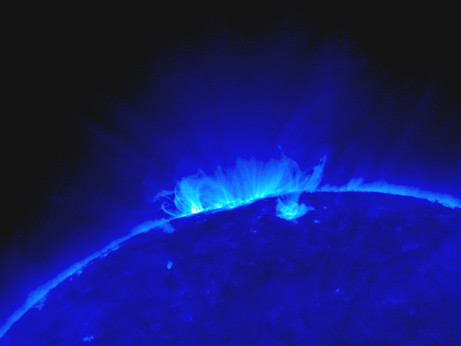Solar Storms

We wrote yesterday about the challenges a hostile space environment presents to satellite technology; last week we were all reminded of those challenges when a solar flare disrupted satellite signals:
An "energetic" storm on the sun disrupted signals in space and forced mission controllers to shut systems down to avoid damage to spacecraft orbiting Earth, the European Space Agency said.
The sun on December 13 expelled a solar flare after a buildup of magnetic energy near its surface triggered an explosion, the agency said today in an e-mailed statement. The flare caused a so-called coronal mass ejection, which sent a stream of fast-moving atomic particles toward Earth…
The flare was the strongest of five categories for such ejections and was one of a series of eruptions this week that emanated from a region of active sunspots.
The flare even affected the ISS:
It may also have caused a fault in the system controlling the space station’s orientation in space.
The ISS usually relies on four large gyroscopes that spin to control its "attitude" without consuming copious amounts of propellant.
Space station flight director Joel Montalbano told reporters in Houston, US, that the unusual solar activity had caused the density of Earth’s atmosphere to increase.
"We’re seeing some problems with our software converging on a nice stable attitude for attitude control," Space.com quoted him as saying.
Last week, astronauts were forced to sleep in protective areas of the station and shuttle as a precaution against the storm.
What do satellite operators like SES AMERICOM do in a case like this? Nothing, really, other than ride it out.
But all that solar activity can be beautiful. The image at the top of this post is from NASA’s twin Solar Terrestrial Relations Observatories (STEREO), which sent back their first images of the sun ‘s growing activity. And some musicians at Berkeley are even making music inspired by "the breeze of electrons from the sun."
But as beautiful as the images of the sun are from last week, some impatient people may wonder what the sun looks like right now. For that, bookmark SolarMonitor.org, which provides nearly real time images of the sun.